What does the different axle arrangements mean? Or what are they called?
Updated
21.02.2014
We will look at some examples. In Europe there are at least two ways of "counting"
the axels, the
UIC classification and the
Swiss system. There are two American ones,
Whyte Notation, meant for steam engines, and
AAR wheel arrangement,
meant for electric and diesel engines. There may be even more, that I do not know anything about, so please
send me an e-mail if you know something more. I normally refer to
the UIC system.
Locomotives with the drive shafts supported directly in the locomotive chassis:
Märklin 34831, LAG 895:
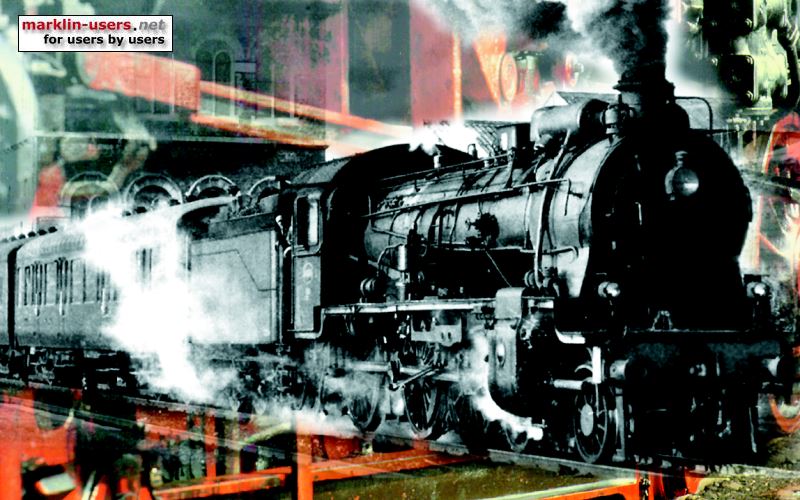
This is a Bo locomotive. Two individually driven axels, without any mechanical
connection between the axels.
B means two driven axels, o means separately driven.
I
Driven axels are counted by letters, A=1 axel, B=2, C=3 etc.
The Märklin model is a B, as both axels are mechanically connected via an
internal shaft and cog wheels.
Märklin 26471, S.N.B D 1/3 Limmat:
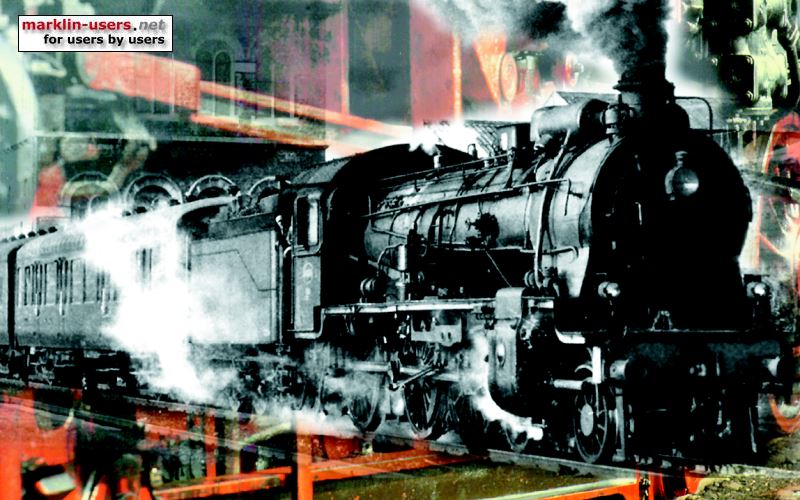
This is a 2A locomotive. Two non driven axels and
one driven axel, all supported in the locomotive chassis. The Swiss calls
it a 1/3 locomotive.
The Swiss system count the number of powered axels, related to the total number
of axels. One powered axel / three axels in total.
The tender seems to be 2.
Märklin 3145, SNCF Y 50 101:

This is a C locomotive. C means that three driven axels are
mechanically connected, in this case with rods. In case of rods, one axel
or a jack shaft is normally driven by the motor.
Märklin 2847, SBB Em 3/3 OC3
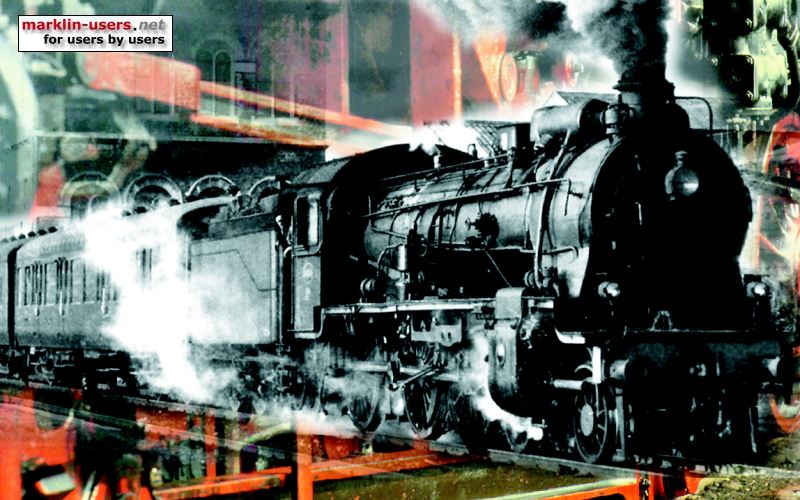
This is a C locomotive. C means that three driven axels are
mechanically connected, in this case maybe with gears inside the locomotive.
So is the model.
Marklin 26535-1, Pfalz Bahn D X II:
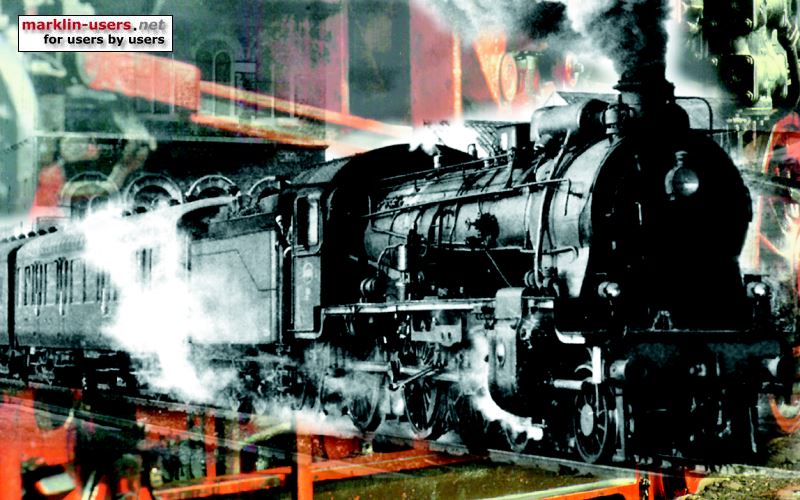
This is 1' B 2, as the driving wheels and the two rear axels are supported in
the chassis.
Märklin 2857, Könische Württembergische St. E. T5 1205 :
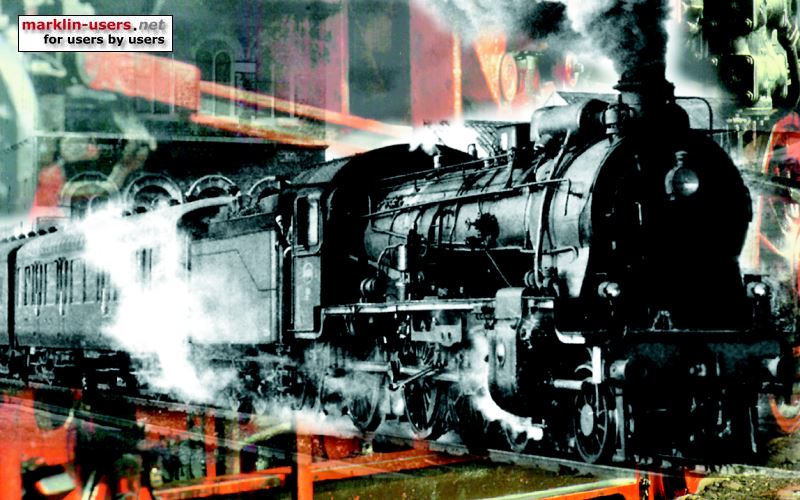
This is a 1' C 1'. In America 2-6-2
(two non-driven wheels - six driven wheels - two non-driven wheels, also called
Prairie)
1' indicates that one non-driven axel is supported in a separate frame, not
in the locomotive chassis itself.
Non-driven axels are counted by numbers, the ' indicates it the axel(s) are not
supported directly in the chassis, but in some kind of "sub frame".
The sub frame is supported in the chassis.
Märklin 37131, SBB Eb 3/5 5818:
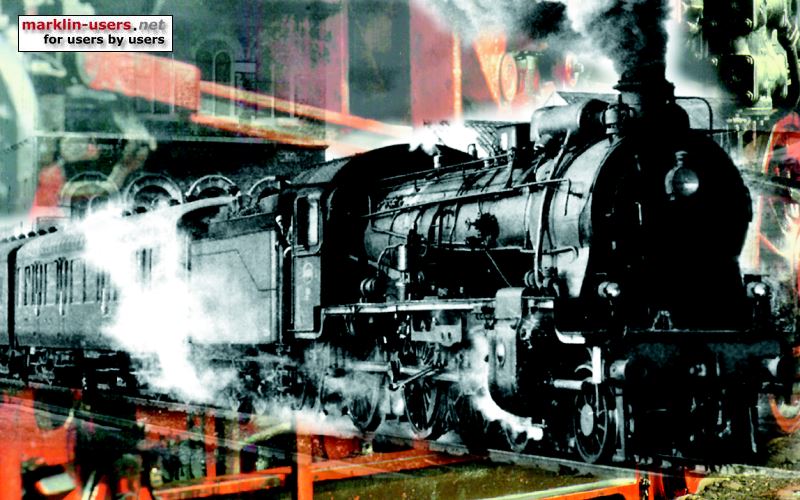
This a Swiss 3/5 (three driven axels of total five), the same configuration as the above
locomotive'.
Märklin 26831, ÖBB 86 106:
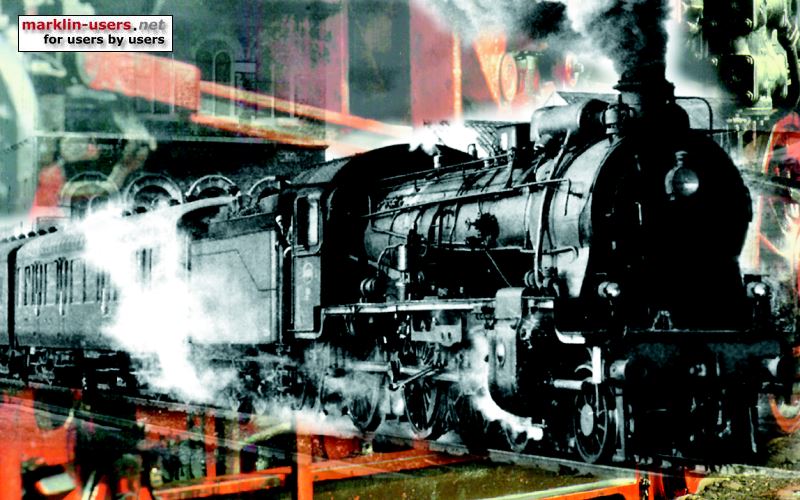
This is a 1' D 1' locomotive, in Switzerland 4/6, in America 2-8-2, also called
Mikado or Calumet.
Märklin 3308, DRG 85 006:
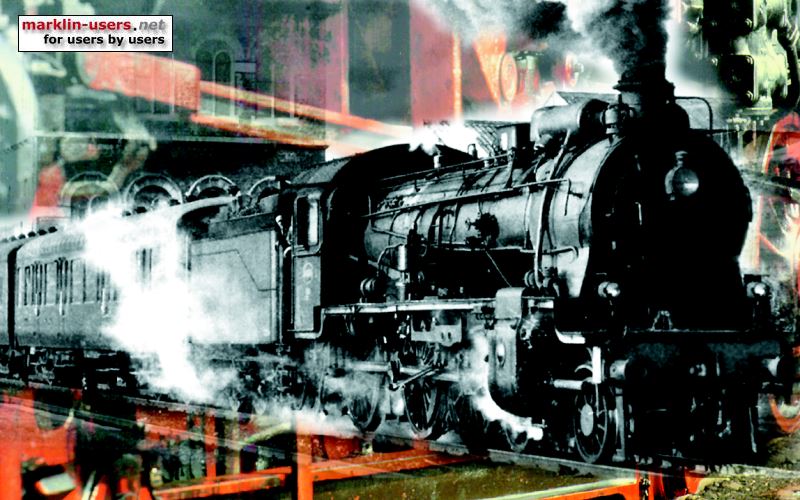
This is a 1' E 1' locomotive, or 5/7, or 2-10-2
(Santa Fe)
Märklin 37060, K. Bay. Sts. B. Ep 3/6 20102
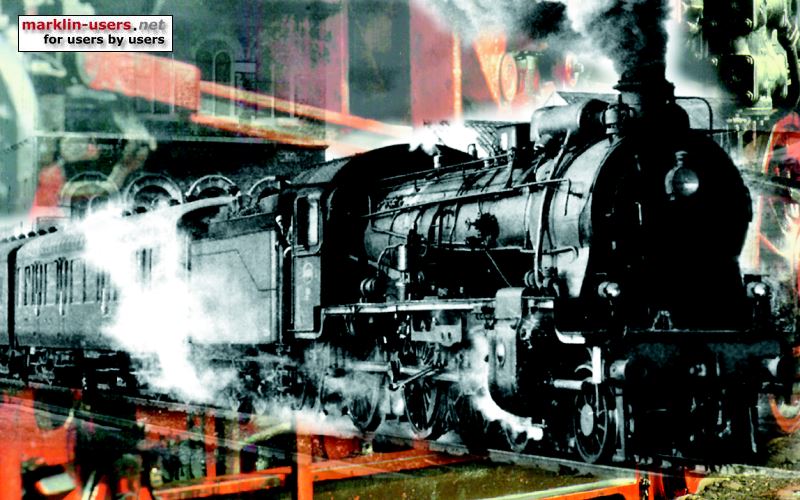
This is 1' C 2', as I think the 1' end is the front. If not it's a 2 'C
1'. The Jack shaft does not count. 2-6-4In the US
The railway people from Bayern obviously used the Swiss system, as 3/6 is
mentioned in the locomotive type.
Märklin 6106, DB 78 355:
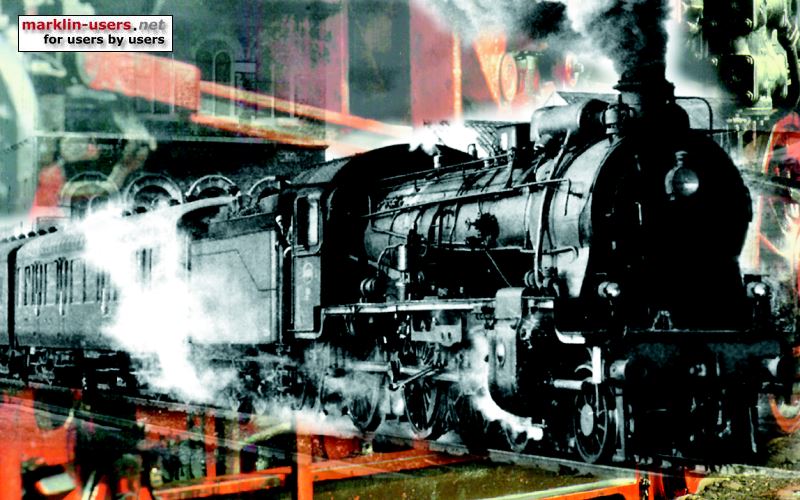
This locomotive is 2' C 2', 3/7 or 4-6-4
Märklin 3417, NSB 63 2770:
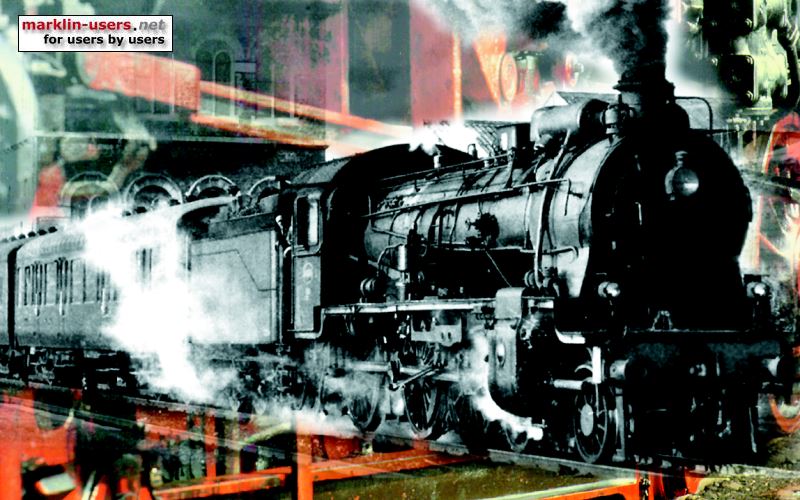
This is a 1' E locomotive, 5/6 or 2-10-0 (or Decapod). The tender is 2' 2'
Märklin 3100-2, DRG 03 124:
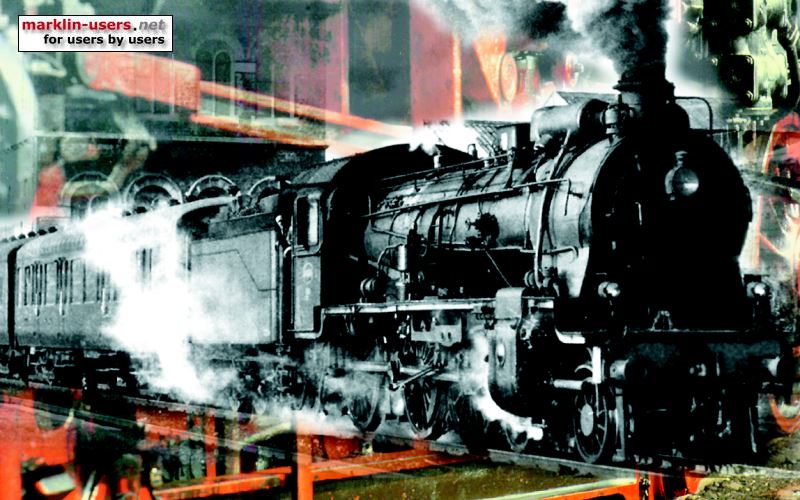
This is a 2' C 1' locomotive, 3/6 or 4-6-2 (Pacific or St. Paul). It has a 2' 2' tender
Märklin 3310, DB 012-081-6:
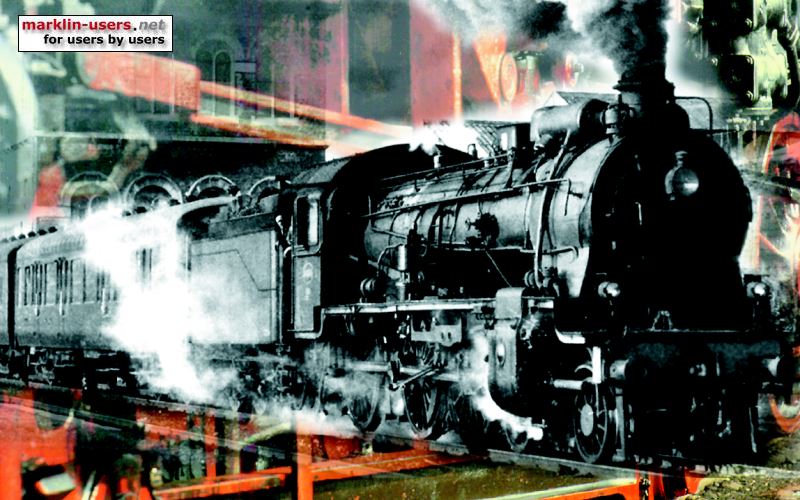
This is also a 2' C 1' locomotive, 3/6 or 4-6-2
This time the tender is 2' 3 (no ' after 3), as the three rear axels are
supported in the tender chassis.
Märklin 39050, DB 03 005
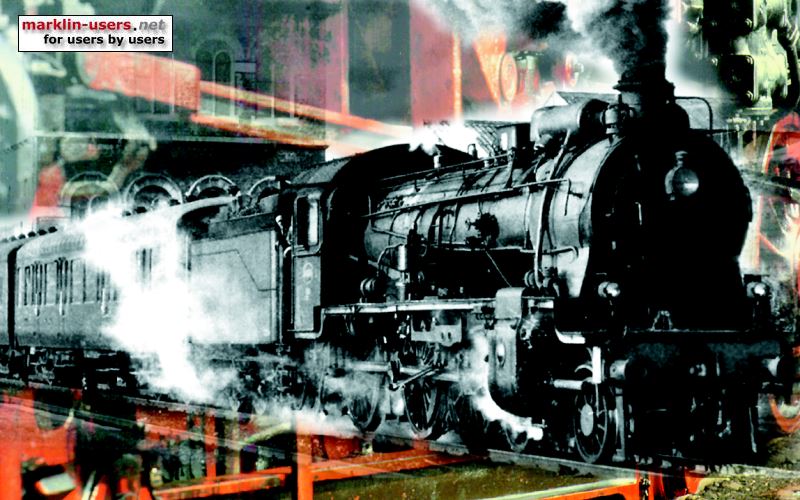
This is a 2' C 2' locomotive, 3/7 or 4-6-4. The tender is 2' 3.
Märklin 3100-1, DRG E04 17:
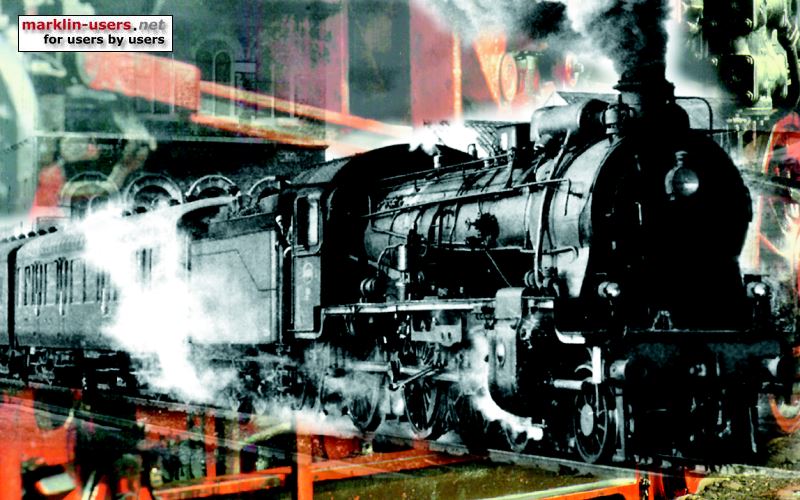
This is a 1' Co 1' locomotive, 3/5 or 2-6-2
Co because the three driven axels have one motor each and are not mechanically
connected.
The model is a 1' C 1', as the driving axels are connected via gears.
Märklin 3366, DB 152 034-5
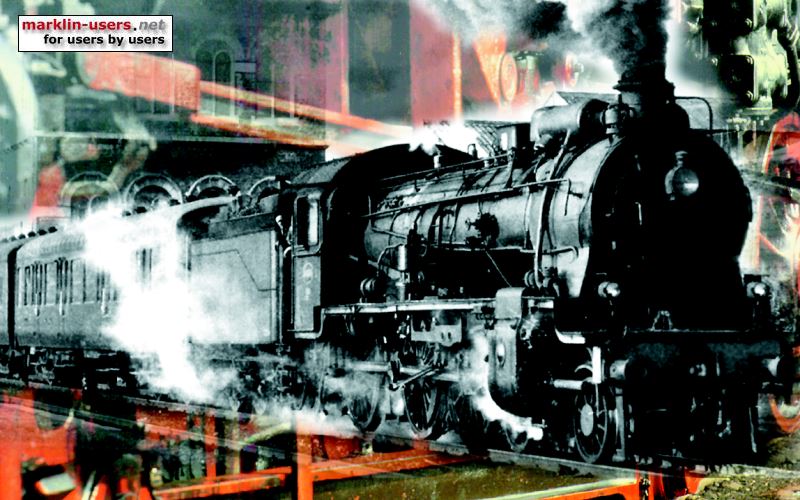
This is a 2' B B 2' locomotive, as the four driven axels are supported in the
locomotive chassis.
The model is different; 2' 2' B 2', as the four driving axels, of which
only the two rear are actually driven, are supported in two bogies.
Märklin 37754. NSB El 12 2113+2114
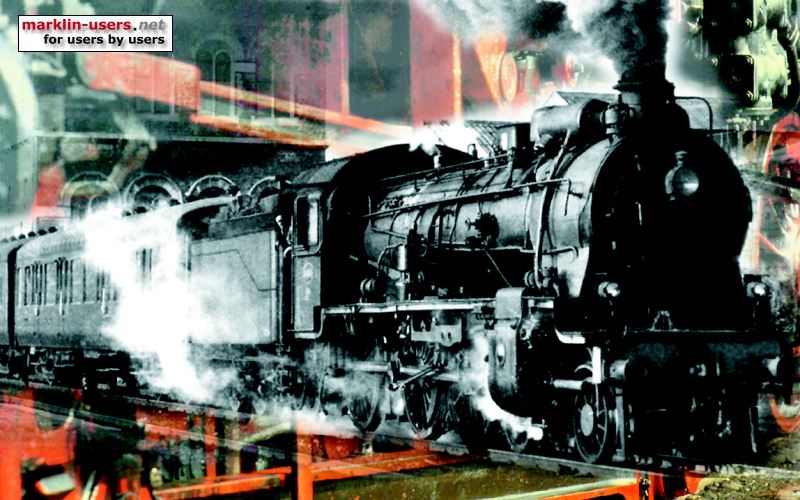
I think this is a (1' D) + (D 1'), two locomotives are permanently connected.
The model is the same.
Märklin 3148 x2, double traction NSB Di5 5.865:
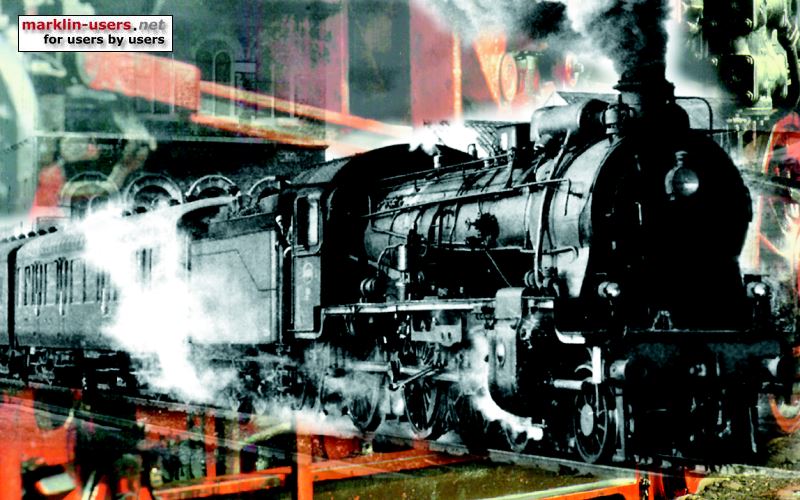
This home made double locomotive combination is a C + C locomotive, or maybe
just two C locomotives?
TThe model layout is also C + C.
Märklin 3346, double locomotive DB 236 405-7 + 236 406-5:
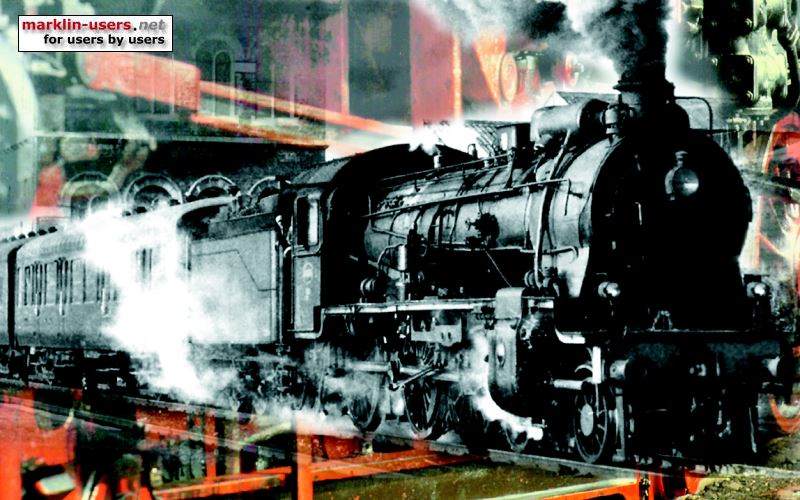
This double locomotive is C + C, or just two C locomotives? so is the model.
Locomotives where the axels not are
supported directly in the locomotive chassis :
Märklin 3772, DB 212 225-7:
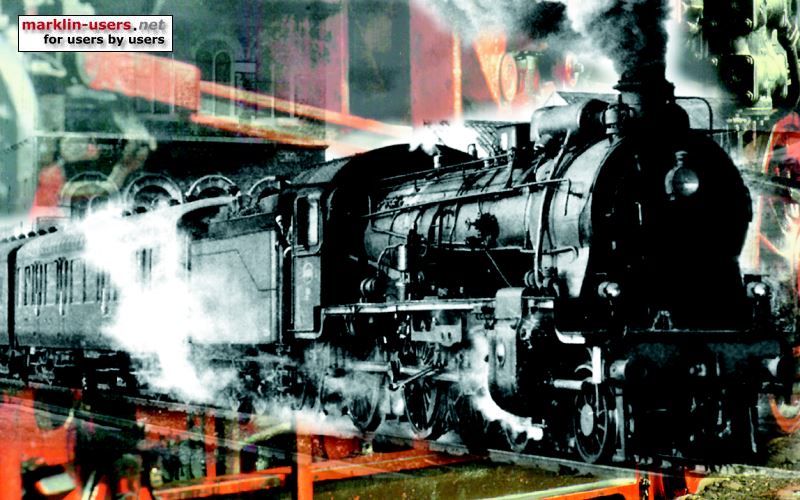
This is a B' B' locomotive, 4/4 or 0-4-4-0
B' means that two driving axels are supported in one bogie, and that they are
mechanically connected. There are two bogies.
The model layout is 2' B'. Only the rear bogie is driven.
Märklin 3013, NS 1101:
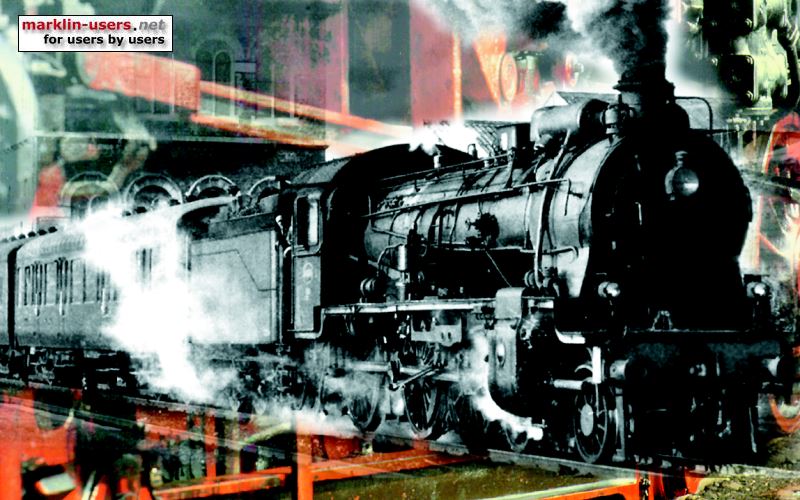
This is a Bo' Bo'
Bo' means that two axels are supported in one bogie. Each axel have it's
own traction motor. There are two bogies.
The layout of this old Märklin model is actually a 1' B 1', with the bogie sides
connected to the front and rear non driven axels. The two driven centre
axels are supported in the locomotive chassis.
Märklin 39420, SBB Re 4/4I 10 015:
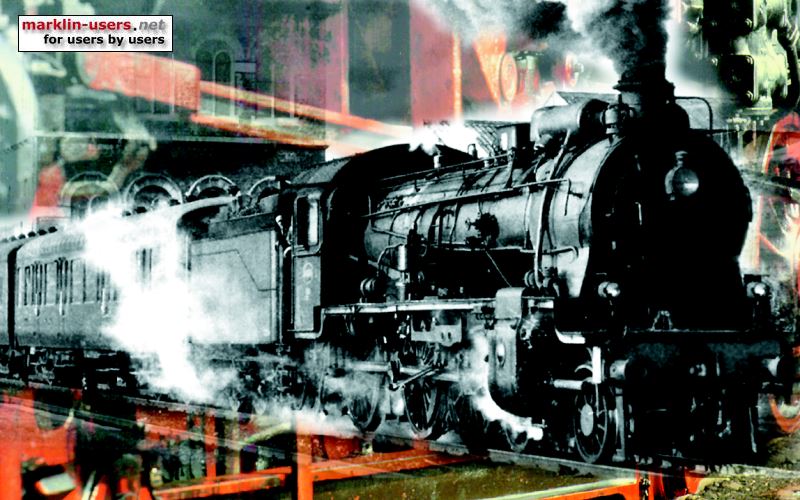
This is a Bo' Bo' locomotive, SBB calls it 4/4
The model layout is B' B', as both bogies are driven, mechanically connected.
Märklin 37320-1, SBB Re 6/6 11 687:
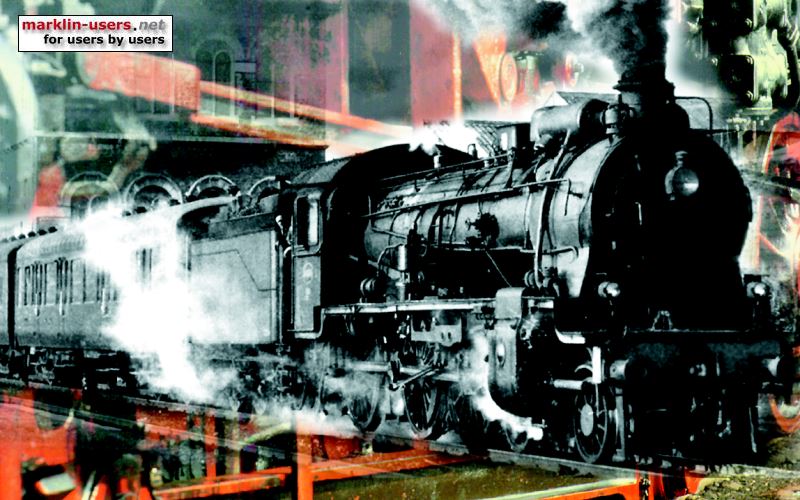
This is a Bo' Bo' Bo' locomotive, SBB calls it 6/6
Bo' means that two axels are supported in one bogie. Each axel have it's
own traction motor. There are three bogies.
The layout of the Märklin model is 2' 2' B', as only the rear bogie has driving
wheels.
Märklin 3137, NSB Di3a 3.623:
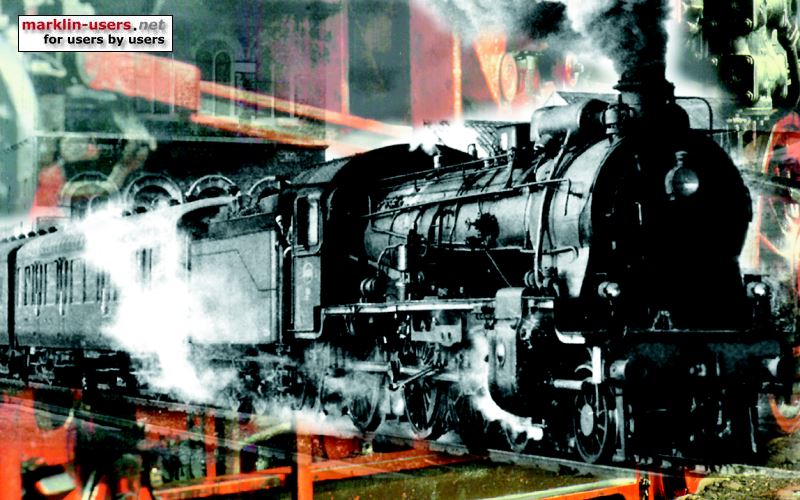
This is a Co' Co' locomotive, 6/6 in Switzerland, 0-6-6-0 in USA
Co' means that three axels are supported in one bogie. Each axel have it's
own traction motor. There are two bogies.
TThe Märklin model is a 3' C'.
Märklin 3300-2, DB 194 155-8:
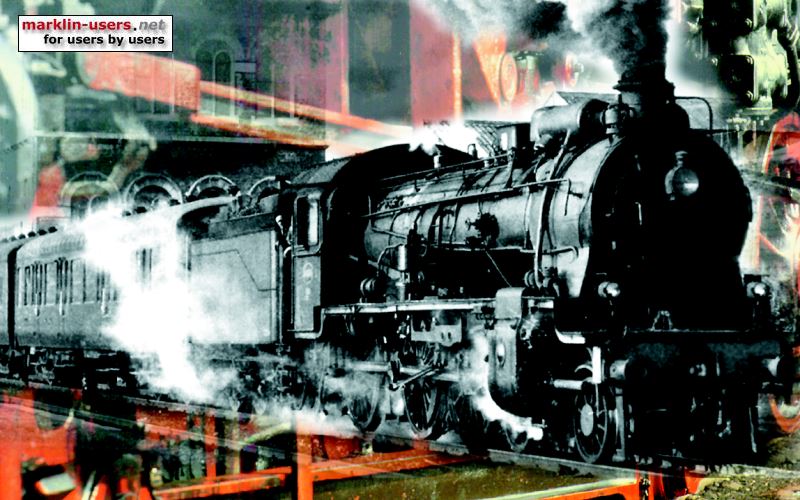
This is a Co' Co' locomotive
Even though the front and rear end of this nice locomotive seems to be separate
parts, they are axel wise considered to be like bogies, thus Co' Co'.
The model is 3' C'.
Närklin 37292, DRG EG5 22 521:
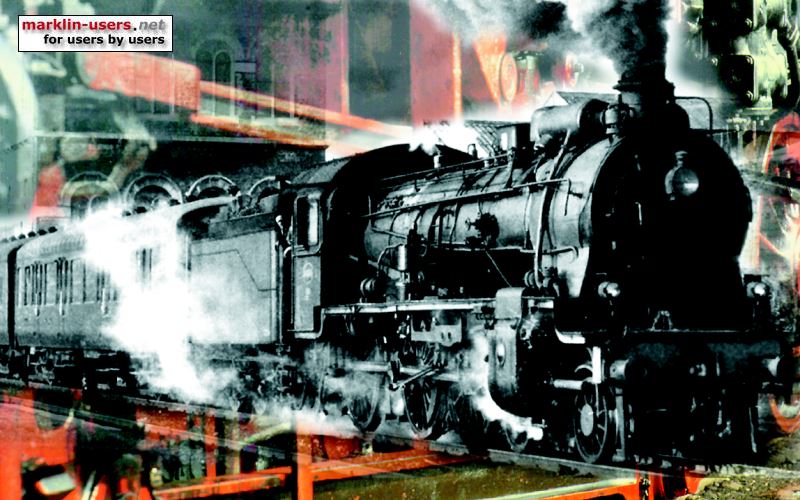
This is a C' C' locomotive
EOr should it be (C) (C) ? That depends maybe on the manufacturer's or the train
company's definition of the locomotive.
Even though the front and rear end of this nice locomotive seems to be separate
parts, they are axel wise considered to be like bogies, thus C' C'.
The model is C' 3', as the three rear axels are not driven.
Other combinations:
p>
Märklin 26730, SSB Be 6/8III 13.304:
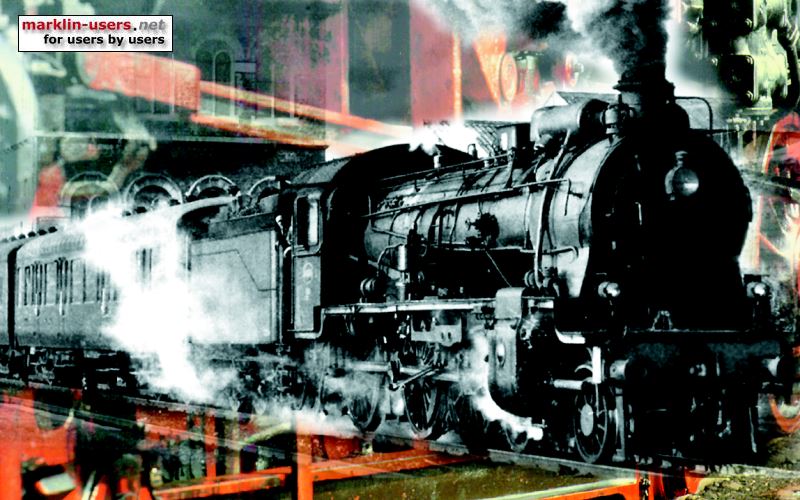
This is a (1' C) (C 1') locomotive, SBB calls it 6/8.
(1' C) means that one non-driven axel is supported in a "sub frame"
which is connected to the chassis, and that three connected driving axels are
supported in the chassis.
The brackets indicate that there are two
separate wheel groups, individually supported in some central part.
It means that this is a "three piece" locomotive.
The Märklin model is (1' 3) (C 1'). Only three axels are driven.
Märklin 37565-2,SSB Ce 6/8II 14.272:
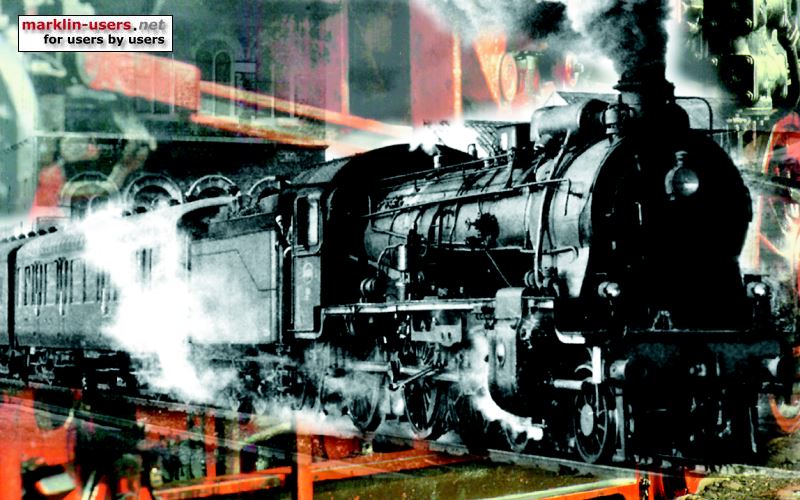
This is a (1' C) (C 1') locomotive, SBB calls it 6/8.
(1' C) means that one non-driven axel is supported in a "sub frame"
which is connected to the chassis, and that three connected driving axels are
supported in the chassis.
The brackets indicate that there are two
separate wheel groups, individually supported in some central part.
It means that this is a "three piece" locomotive.
TThis new Märklin model is also (1' C) (C 1'). six axels are driven.
Märklin 3068, NSB Di3b 3.641:
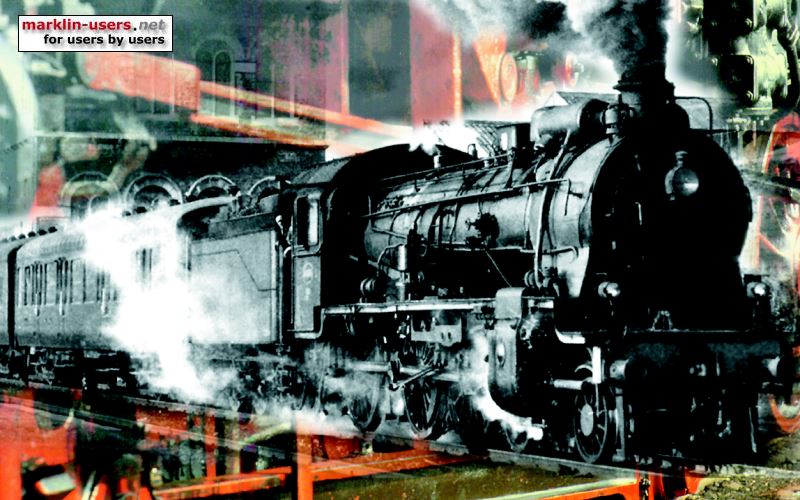
This is a A1A' A1A' locomotive
It looks like a Co' Co' (like NSB Di3a), but in this case the centre axel of each bogie
has no traction motor. In Switzerland this would be a 4/6 locomotive.
This old model from Märklin is 3' C'.
A combination of the above:
Märklin 37591, SBB Ae 8/14 11801:
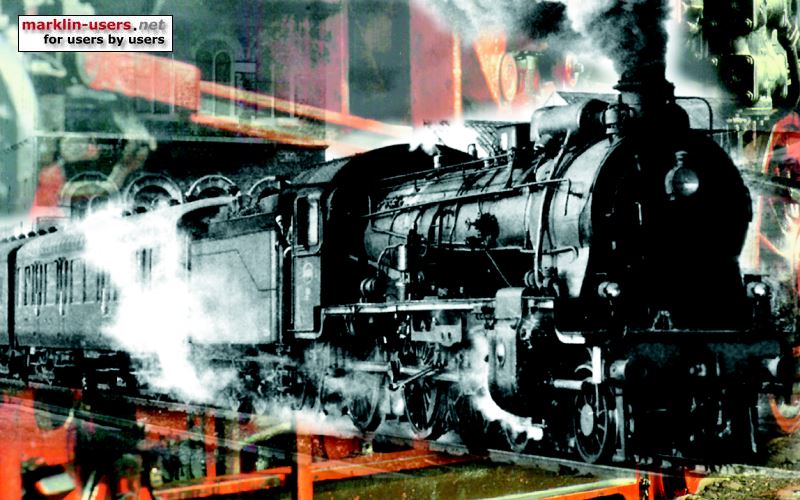
This is also a complicated one. Both (1A)A1A(A1) + (1A)A1A(A1) and (1'A)A1A(A1')
+ (1'A)A1A(A1') are mentioned in different literature. In Switzerland it
is simpler, just 8/14.
One non-driven and one driven axel separately supported, two driven axels in the
chassis with one non-driven between them, and finally one driven and one non-driven
axel separately supported. If that isn't enough, it's a double locomotive. The "+"
connects the two parts.
The layout of the Märklin model is 1' B' 1 2' 1' + 1' 2' 1 B' 1'.
Märklin 37020, DB 53 0012
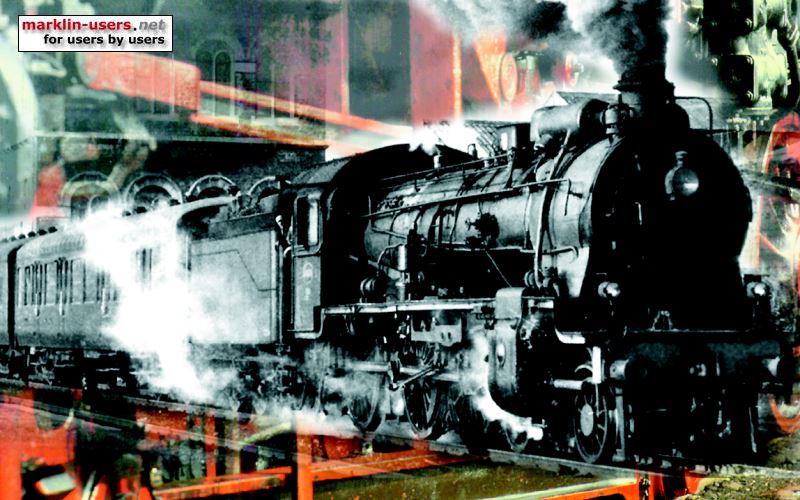
This is a bit complicated (1' C) D type Mallet.
he tender is 2' 3'. Is it 2-6-8-0 in USA?
Mallet
means that the locomotive is articulated. (1'C) is the front part, movable
related to the main chassis and the boiler. D, the four rear axels, are
supported in the main chassis
This model is (1' 3) D type Mallet, as the three front
driving axels are not driven.
Home
Page top































